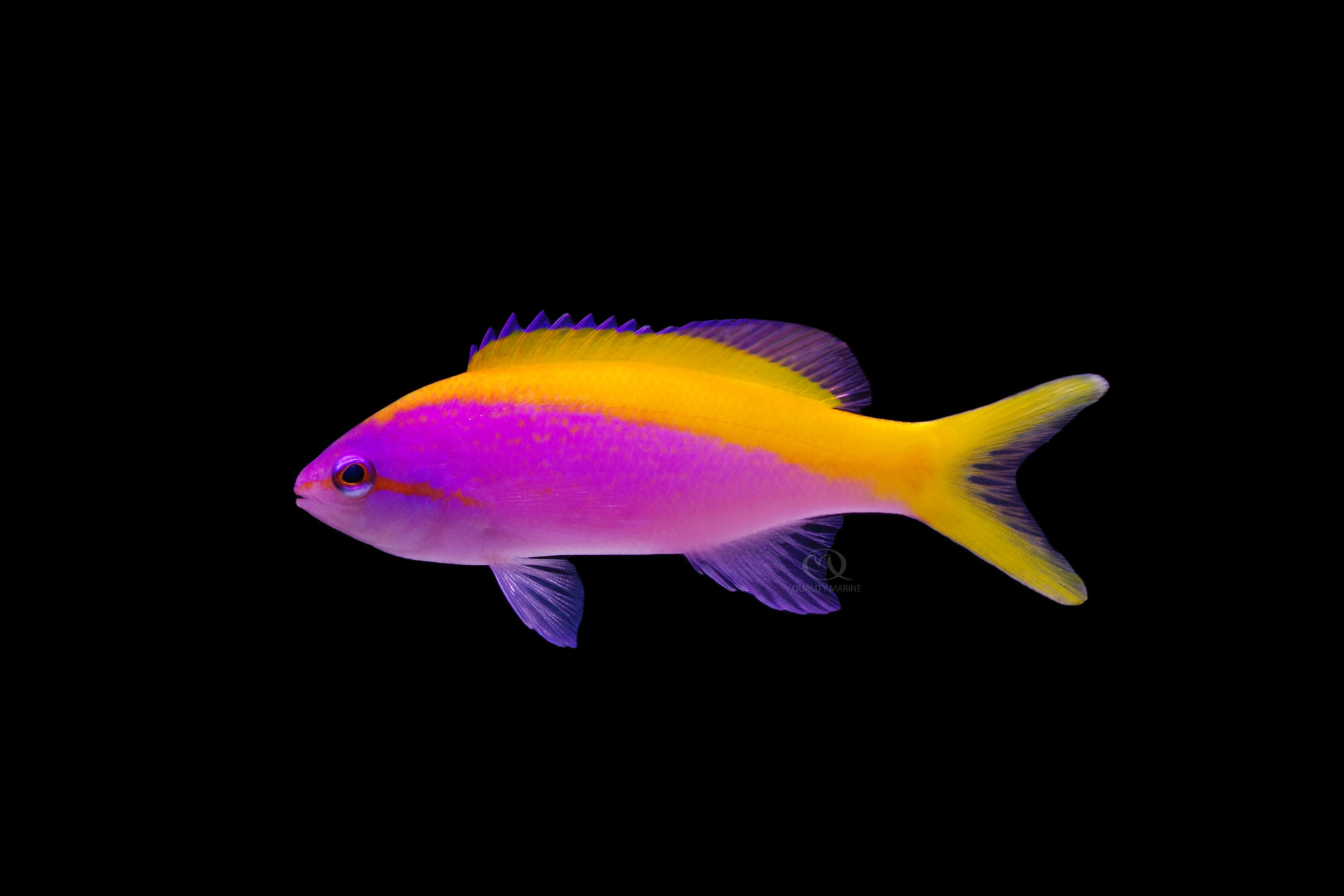Bringing Yellow Back Anthias

In North America, we generally call Pseudanthias evansi the “Yellowback Anthias”. It has a few names globally such as: Two Color Coral Perch, Yellow Goldie, Yellow-tail Basslet, Yellowtail Goldie, Yellowtail Fairy Basslet, Anthias Bicolore (French) and a personal favorite, Gelbrückenfahnenbarsch in Germany, which sounds amazing and translates roughly as the Yellow Bridge Flag Perch. It isn't surprising that they have an array of common names as this is a very common reef fish with a huge natural range, coming from outer reef slopes in tropical seas from Africa to the central Pacific.
Never getting much bigger than three inches (even though they have a “max size” of around five), P. evansi is one of the smaller and more docile anthias species which won't present you with many aggression issues in your aquarium. As a schooling species, we suggest keeping them in groups, and as per usual, the more they merrier with enough space. We suggest a minimum of seven, and more would definitely be better; one male for every five or six females. Obviously keeping this many fish of any type will take a larger aquarium. One benefit of the Yellow Back Anthias is that they do stay pretty small, so the aquariums don't have to get into ridiculous sizes to keep this many. Think 90 to 125 gallons for a small harem as described. If your aquarium is smaller than that, think about keeping a single male specimen, especially if already have other docile anthias. When adding groups, it is perfectly acceptable to add all females as these fish are hermaphroditic and the dominant female will segue into a male in times of need.
Anthias husbandry has been bookmarked as being for advanced hobbyists only; this is a recommendation that is certainly safe. These fish will do best in larger, more established aquariums. While the parameters to keep them happy aren't usually difficult to maintain, there are a few points that can be tricky. All anthias are very active fish, with high metabolic needs and small stomachs. This means that multiple feedings per day are needed, or even better, a well established refugium constantly supplying live foods in addition to the timed feedings would go a long way toward keeping your harems thriving. We feed them a mix of thawed marine based meaty foods like finely chopped seafood, mysis, Nutramar Ova and rotifers. They will segue onto prepared foods in time if fed them at the same time as the meaty offerings. This makes using autofeeders much more feasible and easier to make the off time feedings. Another tip is to keep them in a slightly cooler than average aquarium; while they are capable of living in an aquarium as warm as 80, the cooler temps (think mid 70s F) will hold more oxygen and stress them less. Another tip is to make sure there is as much flow as possible in the aquarium. This will not only help the dissolved oxygen levels, but will also give them an environment most like the one they are used to in the wild.
For those of you who have the time, patience, and right aquarium, Pseudanthias evansi is a gorgeous, different and interesting fish to keep. Avoid keeping them with very plodding swimmers or overly shy fish that will get out competed for food and avoid large aggressive tank mates who will bully the Anthias into hiding and prevent them from eating as well. Offer lots of meals, lots of hiding places, and lots of current and you are most of the way there to keeping one of the hobby's most beautiful schooling fish. Ask your LFS about sustainably sourced Evansi (or whatever name you choose) Anthias today!